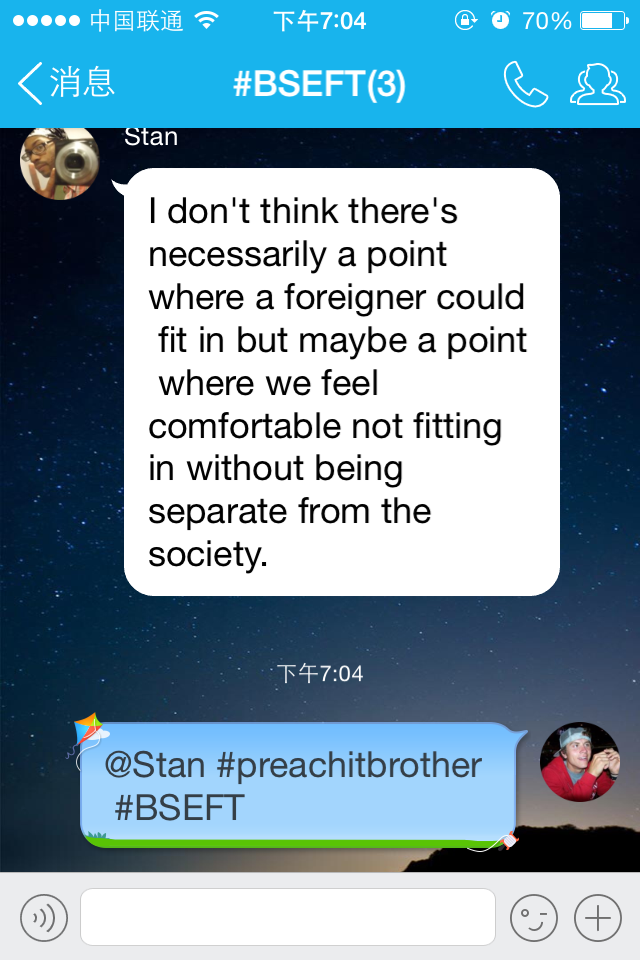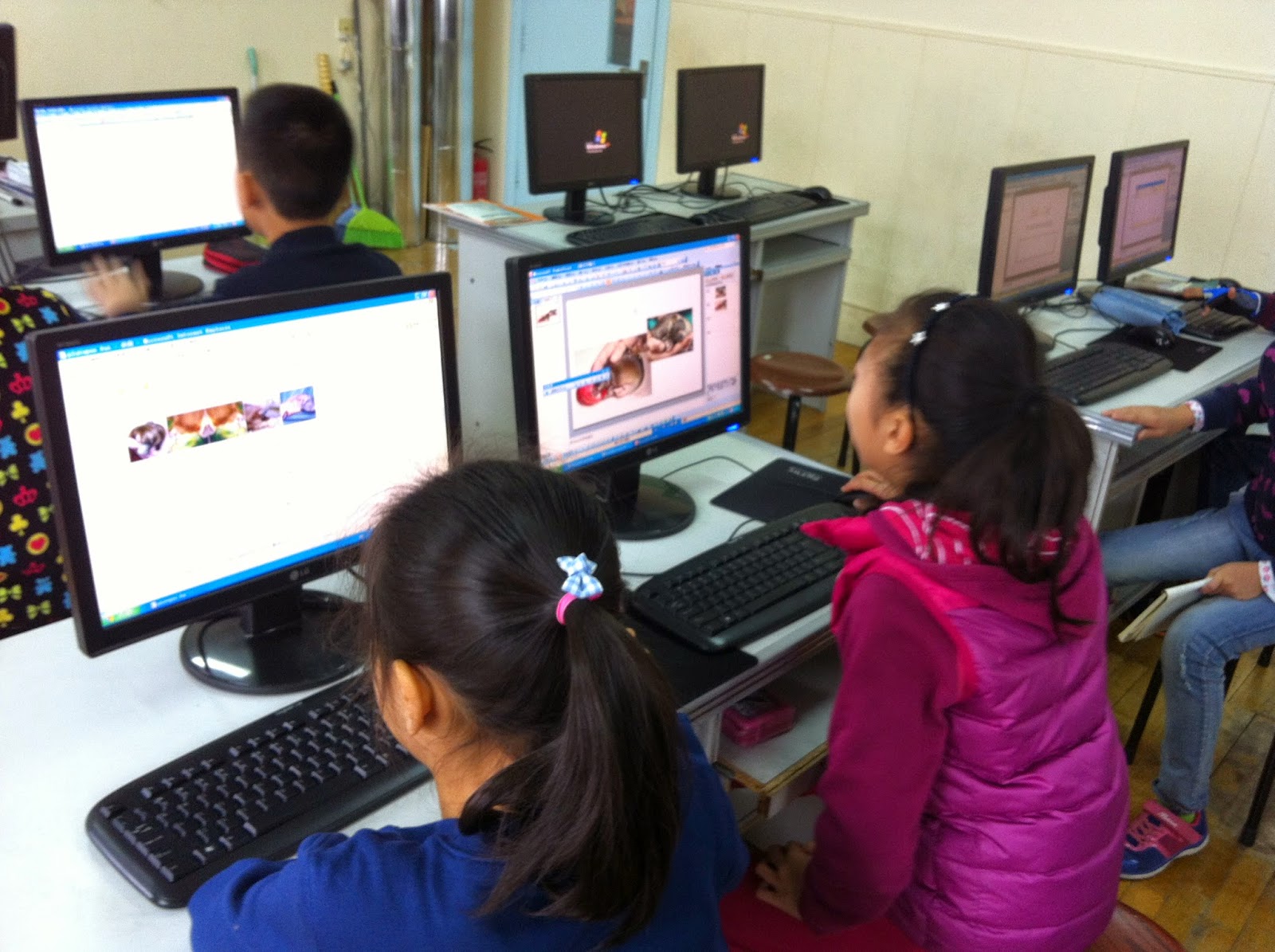For an introduction to Twitter chats, I first suggested that we use an app called QQ. The guys agreed so we set up last night (Thursday) to have a spark chat from 6:30-6:45pm. Now, QQ is more of a chat/public posting app or website. The group chat feature is tolerable since there's no mentioning nor favoriting capabilities. You can mention others in WeChat, but it is also mostly convenient for devices. While one of the guys doesn't have a working smartphone, we went with QQ.
 |
| our group chat where we practiced mentions & hashtags |
So just like that, our #BSEFT (BaiShan Elementary Foreign Teacher) chat took off! Comments and questions started clicking almost as soon as we started. And before I knew it, one of them delivered our #micdrop to end it.
I decided in the midst of the chat a couple times to post screenshots of Stan's (one of my colleagues) comments on Twitter. I wanted to see what kind of response I would receive from a more global audience. It didn't take very long for the teamwork quote to get favorited and retweeted. When I passed this information on to him today, he was happy to help and then went on about his father's quotes. I simply re-emphasized how he made a global impact with just one line and one click whether or not it is a quote from our fathers or not (haha).
That's the power of social media. A spark chat on QQ with my PLC in China or a conversation with my PLN on Voxer from China to NJ and CO in the States. It's happening...worldwide collaboration. Anywhere, anytime, with anybody you choose. Thus, why I'm now reading Steven Anderson and Tom Whitby's The Relevant Educator. I would like the teachers at my school to experience the power that is on tap in the palm of one's hand.







